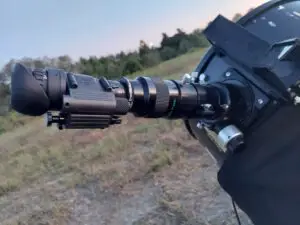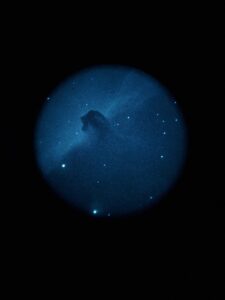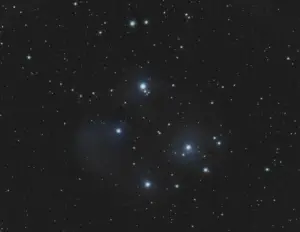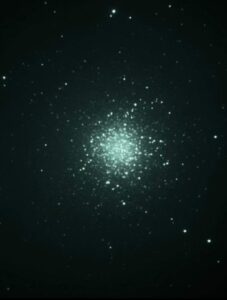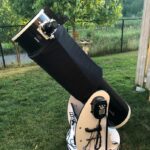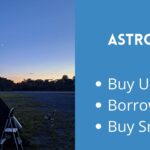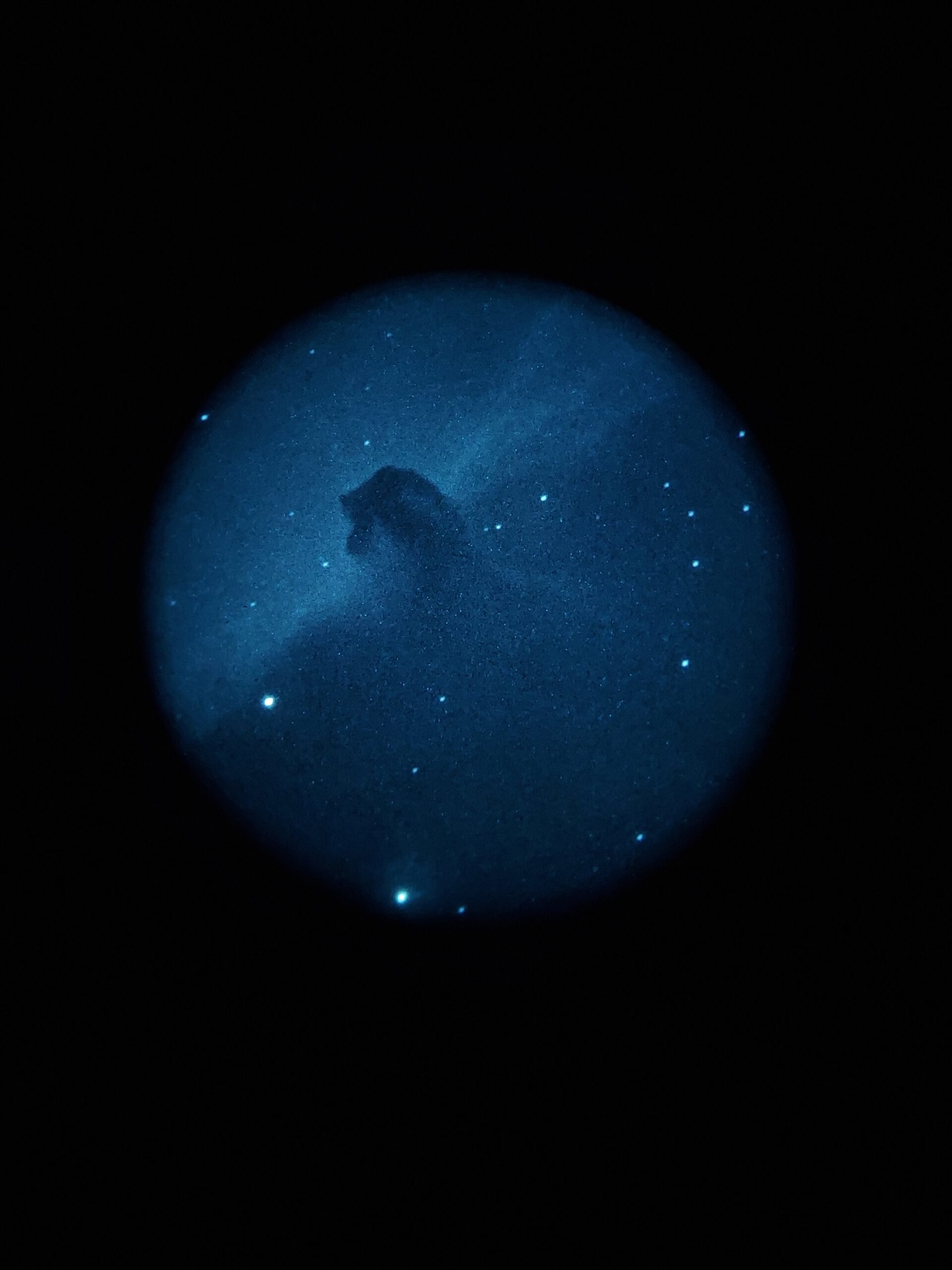Texas has some incredible dark sites worth visiting with your telescope. Texas has 4 International Dark Sky Parks, and many areas of Bortle 1 and 2 skies where astronomers and astrophotographers can enjoy the night sky.
This list contains only sites that I have seen reviewed by amature astronomers. There are some big parks and a few hidden gems from astronomers who have shared images and experiences.
Many of the darkest skies in the states are in west Texas, over 400 miles from Houston, so plan your trip with that in mind.
Be sure to check the weather often and plan to spend two or three nights in a location to have the best chance at good conditions and clear skies.
You could also check the Texas Park’s events page to find star parties and other astronomy events across the state. There are frequent events all across the state. I highly recommend any beginners attend some events.
There are also 2 very large and well established anual Star Party events in Texas. One is the Texas Star Party and one is the Okie-Texas Star Party.
I have inclueded inforation about these events at the end of the article.
It is a great way to see different set ups, get a feel for accessories and have any questions answered.
Shurley Ranch, Marfa, TX
Shurley Ranch is a hunting ranch in Jackson Texas. Located about an hour north of San Antonio, Shurley Ranch skies are Bortle 1, the darkest available.
The ranch is advertised to hunters, so arrangements should be made if you plan to spend time stargazing. You can contact them at (830) 868 – 7109.
The hunting packages are quite pricey, so if you hope to just go observe, consider renting a yurt at nearby Johnny’s Yurts and enjoy the expansive skies with so much luxury.
These vacation rentals are fairly closely spaced, but if you can visit during the week you can likely avoid noisy neighbors.
Big Bend National Park in Texas (Protected Dark Sky)
Big Bend is one of the first locations you will find when you are planning a dark sky trip in Texas. The park is an International Dark Sky Park which means that they have taken lighting into consideration in all areas of the park.
The lighting on cabins and in parking lots is designed to be the lowest light that is appropriate and all lights are directed at the ground.
This west Texas park is said to have the darkest skies in the lower 48! There are multiple events each year, so you can plan to attend a park sponsored event.
The park is so dark because it is fairly remote, so plan to spend some time driving and if possible stay at least 2 nights to really make it worth it.
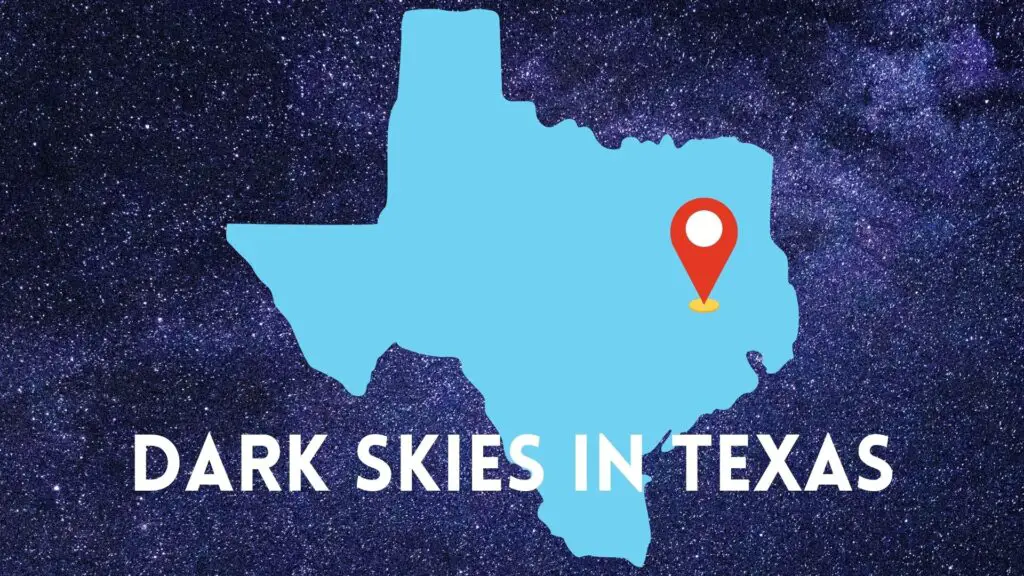
Cooper Breaks State Park
Cooper Breaks is another International Dark Sky Park and is mostly a bortle 2 area.
They host monthly star parties from April to November so there are plenty of opportunities to connect with other astronomers. There are generally interesting talks given by the hosts of these events as well.
The park is well away from major highways and very quiet at night, the camping on Big Pond loop is a good place to set up your scope making it very convenient, but bring your own electricity as there are no outlets there.
The park is well laid out with an incredible visitor’s center and lots of beautiful hiking.
Be sure to check the forecast and try to go close to a new moon for the darkest skies possible.
Fort Davis
Fort Davis is a National Historic Site and boasts some very dark skies. Many astronomers have enjoyed the very affordable star parties offered in this area.
If you are looking for a very quiet place to observe in some very dark skies, this is a good fit.
Fort Davis is over 10 hours from Houston, so it is a destination all it’s own, so plan to spend a few nights and camp at Fort Davis.
If you want to be surrounded by other astronomers, you may also enjoy a day trip to the McDonald Observatory located nearby.
McDonald Observatory
While you are out in west Texas, be sure to visit the McDonald Observatory. This is an attraction that you should not miss.
The observatory is a stunning site as the white domes stand in contrast to the unspoiled landscape.
The observatory is constantly being used by astronomical researchers from all over the world. The special thing about the McDonald Observatory is how open they are to the public.
There are self guided and guided tours of the observatory available most days of the year. The star parties are attended by many astronomers and they have a large library of telescopes available for those interested in trying one.
The star parties are very popular, so if you plan to attend with a large group be sure to make reservations ahead at the observatory website.
You can watch their live streamed events on the McDonald Observatory YouTube Chanel.
There are no overnight accommodations, dining or gas stations at the observatory, and camping on site is prohibited so be sure to make sleeping arrangements nearby.
There are a few AirBnBs located close to the observatory, but you will still need to drive quite a ways to rest so leave before you are exhausted.
Brazos Bend State Park
Brazos Bend State park is home to the George Observatory.
The observatory is owned by the Houston Museum of Natural Science, but it is located inside the National Park Brazos Bend. You will have to purchase admission to both on your visit.
The George Observatory hosts Saturday night stargazing events and has just recently reopened after extensive renovations.
Be sure to book a ticket at their website if you hope to attend one of these events as they keep the numbers low so everyone can enjoy the views.
The George Observatory has made a special effort to be Autism friendly for it’s guests by training at least 80% of volunteers in working with individuals with Autism and sensory processing differences.
The George Observatory has completed the certification to become a Certified Autism Center through the IBCCES.
O’Brian Dark Site, Montgomery, TX
If you are looking to avoid the crowds that can flood the state parks, you can look to connect with the North Houston Astronomy Club at their private dark sky area in Montgomery Texas.
Montgomery is about an hour northwest of Houston making it much more accessible than the larger west Texas dark sites.
The North Houston Astronomy Club is large and active and members are permitted to bring guests to the dark site with prior permission.
Consider reaching out to some members through the website to find out about in person and virtual events and you can enjoy dark skies without the 5+ hour drive out to west Texas.
Star Parties in Texas
While the observatories in Texas that I have listed all host regular star parties, there are two large events that take place anually that draw large crowds of ameture astronomers.
These events require registration and have a cost, but they are epic multi day events where you can meet other people in the hobby and see a wide range of scopes and setups.
Okie-Texas Star Party
The Okie-Texas Star Party is an anual event that is put on by the Oklahoma City Astronomical Society.
This is one of the best known star parties in the ameture astronomy community and I see posts about it all year long. It has been running for over 30 years.
The event takes place in the fall and lasts a full week in the panhandle of Oklahoma.
The event takes place at Camp Billy Joe each year, with organizers working to improve the facilities each year. There are catering options available to attendees and camping on site as well as community bathrooms and showers.
This video gives all the details of this event and is presented by one of the organizers.
Even if you do not have a telescope, or you are just getting started, this is a great place to be. You can get more information on the Okie-Tex Star Party Facebook Page.
Texas Star Party
The Texas Star Party takes place in the stunningly dark skies of West Texas and it takes place in the spring.
The Texas Star Party takes place in Prude Ranch each year, it is a great way to meet other astronomers and get plenty of time at the eyepiece.
You can find out more at the Texas Star Party Website.
Finding Dark Skies in Texas
I know I always look for dark skies whenever I am traveling. There are really three ways to find a dark sites on your trip:
Use LPM (Light Polution Map)
My favorite way to find dark skies is to use an app called LPM, or Golobal Light Pollution Map.
The app shows a map with a bortle score shown overlaying the map. I look for bortle 1 or 2 areas and find local landmarks or businesses and call ahead to ask about setting up a telescope.
The downside here is that you don’t really know what you will get when you show up. Swampy ground, tall trees, wild animals or there might be no place to set up.
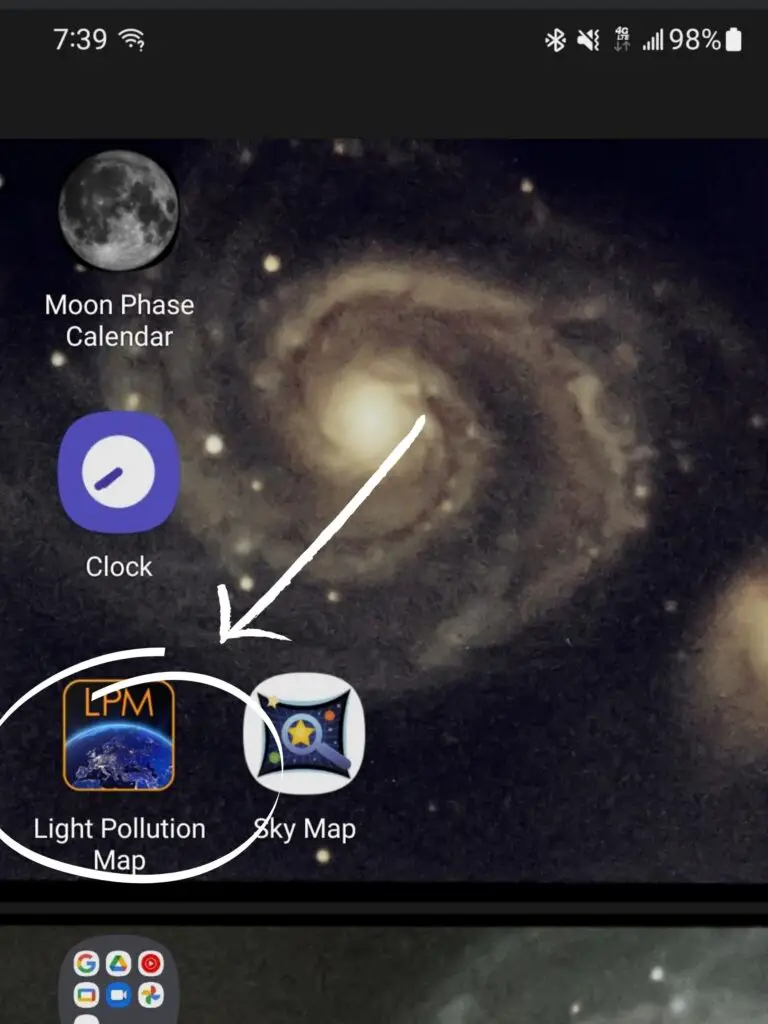
So, this is the method I use most often, but it is not the best method.
Astronomy Clubs
You can also reach out to local astronomy clubs or on Cloudy Nights to see who is in the area.
You may stumble upon a star party night or event, but you are sure to find someplace that welcomes astronomers.
This is the most reliable way to find a good, astronomer-friendly, dark sky area.
Cloudy Nights
Astronomy is a small world and so many astronomers who are willing to share great spots to set up for the night.
Make a post on Cloudy Nights or in your favorite Facebook group to see if there are any local astronomers.
This is a great way to find a safe, clear spot and maybe hang out with another astronomer.
Dark Sky Etiquette: How to Be Light Polite
If you will be attending a star party for the first time I wanted to give you a few quick pointers about dark sky etiquette.
Astronomers take dark skies very seriously, so be sure to respect the darkness.
Use low headlights when parking and point your flashlight at the ground when approaching other observers.
White light can ruin your night vision and make it more difficult to see dim distant objects though a telescope.
As a general rule, all white lights should be covered and only red lights are permitted in the observing area. Red head lamps are available on Amazon and will make you look like a pro. We have one for almost every family member.
These are the headlamps that our family uses.
Enjoy the night!
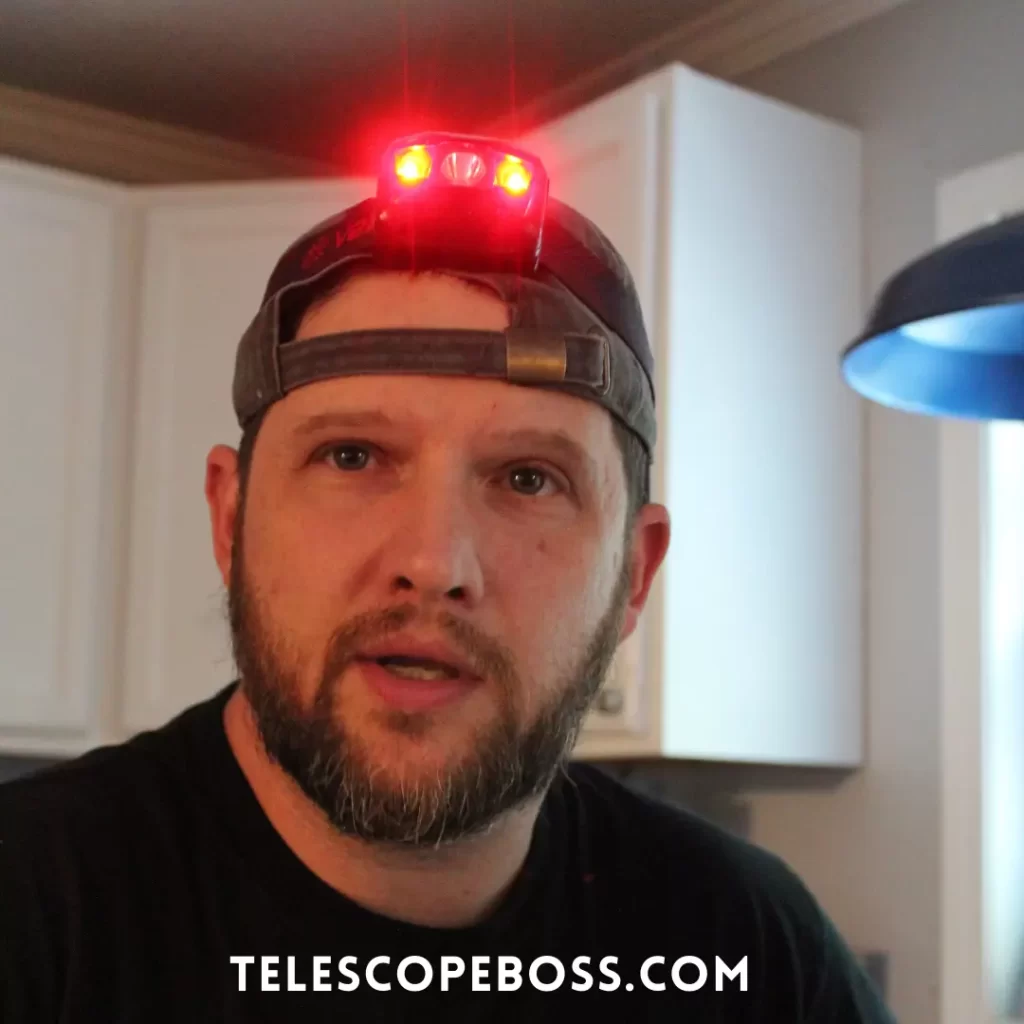
Clear skies!

